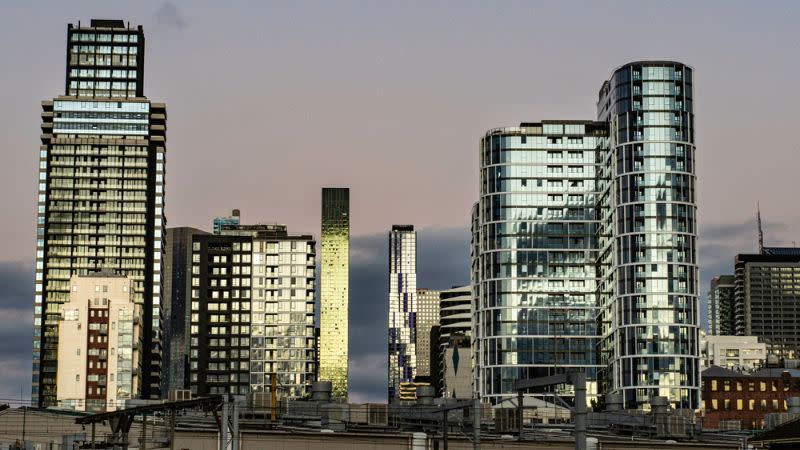No Solution to Apartment Shortages ‘Without Incentives’

With the brakes screeching on housing supply but demand accelerating, incentives are needed to lure local and foreign investors otherwise Australia’s apartment markets will remain chronically constrained and undersupplied.
That warning is loud and clear in Charter Keck Cramer’s latest State of the Market analysis, which indicates the apartment industry is facing “substantial headwinds” due largely to rising interest rates and construction costs.
“These headwinds are leading to projects being deferred to later into the cycle and now also being abandoned,” it said. “This is ultimately stifling supply.”
According to its latest data, both “for sale” and “for rent” markets were continuing to recalibrate in the wake of the pandemic.
“The residential market is anticipated to continue to be volatile and remain distorted over 2023 until a new equilibrium is found,” it said.
“We are still dealing with the impact of fiscal and monetary decisions made during the height of the pandemic in 2020-2021 and now more importantly, the largely lagged effect of nine interest rate rises to curb inflation.”
Charter Keck Cramer research director Richard Temlett said population growth—a key driver of housing demand—also was on the rise and, based on several leading indicators, it was “highly likely” net overseas migration had been underestimated by the government.

“This will create significant demand for new homes at a time when supply is struggling to be mobilised,” he said.
As a result, the markets in Australia’s major gateway cities—Melbourne, Sydney and Brisbane—were facing the largest undersupply of apartments going forward.
“They just need to build the most based on population growth that’s returning very, very quickly,” he said. “Over the next few years Melbourne and Sydney, particularly, are going to be undersupplied given net overseas migration is just bouncing back so strongly.”
Temlett said the apartment industry—both build-to-sell and build-to-rent—needed to be incentivised to lure local and foreign investors back into the market.
“If it’s not stimulated, then supply is not going to be able to be mobilised.”
He said foreign investors and buyers were essential to support the recovery of Australia's metropolitan apartment markets
In its latest reports Charter Keck Cramer strongly urged government to “embrace the large pool of foreign institutional capital waiting to be deployed into Australia” through the reintroduction of incentives.

“The benefits could include a substantial amount of new rental stock being delivered to the market … which frees up existing rental accommodation for many households, provides greater choice and competition and reduces upwards pressure on rents,” it said.
Foreign institutional capital sees the fundamentals of Australia and “is just waiting on the sidelines”, according to Temlett.
“They just need a little bit more certainty, not only with where interest rates land but also when they’re making their investment and development decisions … to have some of those incentives would just make it that much more attractive.”
Temlett said one avenue to stimulate the build-to-sell apartment market would be through the reintroduction of off-the-plan stamp duty concessions to foreign and local investors, the settings of which were changed in 2017 due to concerns investors were overheating the market and knocking out owner-occupiers and first homebuyers.
As for the build-to-rent market, he said it was basically a matter of “leveling up the playing field with changes to GST, the managed investment trust rules and also further extending land tax discounts”.
“If that doesn't happen, build-to-sell is going to continue to remain slow, just because it needs pre-sales and sentiment is very weak … [and] for build-to-rent, while it doesn’t rely on pre-sales, financiers still need to be satisfied that they're getting a return for the risk that they’re taking.”

Charter Keck Cramer’s research showed apartment construction commencements in 2022 slumped to their lowest level in a decade in Sydney (8600 apartments), Melbourne (5200 apartments) and Brisbane (1800 apartments).
Currently, its data showed there were 22,844 apartments under construction in Sydney, 14,930 in Melbourne and 4725 apartments in Brisbane. Simultaneously, there were a further 10,344 apartments being marketed for sale in Sydney, 9500 in Melbourne and 2672 in Brisbane.
But the reports noted that “not all marketed projects will necessarily reach completion given the requirements to reach pre-sales targets before attracting construction finance”.
“On this basis these figures are likely to be revised downwards as various projects proceed through the development cycle.”
Rising interest rates were increasing project costs and also diminishing purchaser capacity and buyer demand, leading to slowing pre-sales in many projects.
Despite the current level of uncertainty “making investment and development decisions extremely difficult”, the report said the key fundamentals for both build-to-sell and build-to-rent apartments remained.
It also observed that apartment product relative to houses stood to benefit from interest rate rises because buyers “will need to trade-off home type for location to enter the housing market of their choice”.













